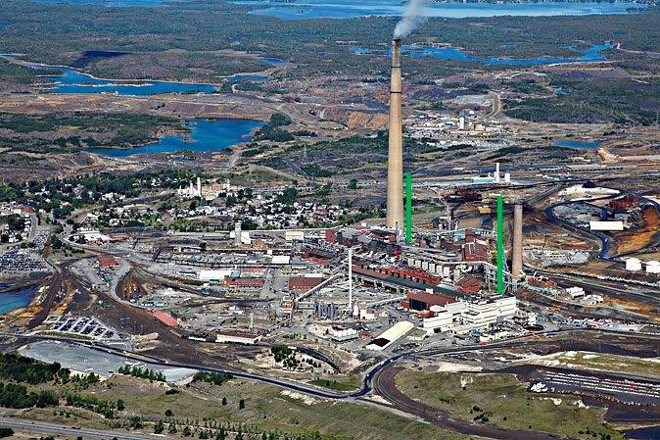Two new smokestacks are being built at Vale’s Copper Cliff Smelter Complex as the company nears completion on its Clean Atmospheric Emissions Reduction (AER) project.
In a June 5 news release, the company said a wet gas cleaning plant has been commissioned, capturing gases and sulphur dioxide emissions, resulting in fewer emissions coming from the Superstack.
Pegged at $1 billion, the Clean AER project began in 2012. It’s designed to reduce current SO2 emissions by 85 per cent and metal particulate emissions by 40 per cent.
The two new stacks will require far less energy to operate than the Superstack, which will reduce greenhouse gas emissions from Vale’s Copper Cliff Smelter by approximately 40 per cent.
Dave Stefanuto, Vale’s vice-president of North Atlantic Projects and Base Metals Technology, called it an "historic milestone."
“By decommissioning the Superstack, the smelter’s natural gas consumption is estimated to drop by nearly half,” said Stefanuto.
“The reduction is equivalent to the average fuel consumption of approximately 17,500 homes, or approximately one third of all the households in Greater Sudbury.”
The next stages of work include the construction of concrete shells for the two new 450-foot smokestacks, which is expected to be complete later this summer. Steel liners will be installed in the new stacks in 2019.
Vale will then start the decommissioning of the Superstack, which will start with the removal of the steel liner in 2020, followed by the concrete shell, which is expected to continue over several years.




